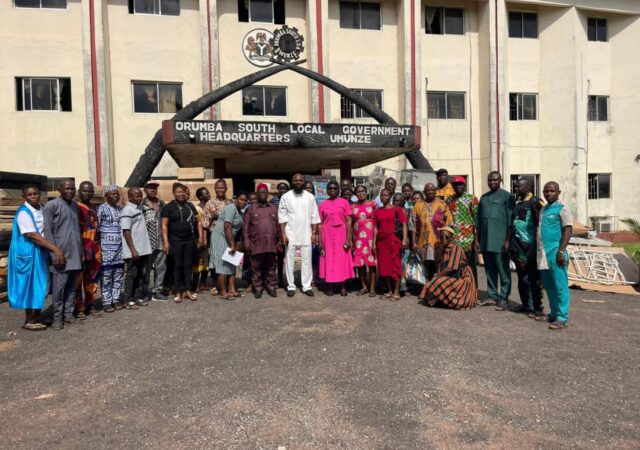By Christopher Burke
Indigenous communities across Africa have long shaped and preserved ecosystems, applying deep ecological understanding built through generations of observation and adaptation.
In the African context, Indigenous Peoples are self-identified communities with distinct cultural identities, ancestral ties to specific territories and unique knowledge systems developed through historical experiences and strong dependence on natural resources. Many of these specialized systems hold critical solutions to contemporary environmental crises, including climate change, biodiversity loss and land degradation.
Despite international recognition of their contributions, African Indigenous communities remain largely marginalized from formal environmental policy and decision-making, impeded by systemic barriers such as inadequate legal recognition, limited political influence and restricted access to essential resources.
Practical Knowledge in Action
Indigenous environmental management is evident across the continent. Kenya’s Ogiek community has sustainably maintained the Mau Forest through selective gathering, hunting and beekeeping protecting a critical water catchment. Despite a favorable 2017 ruling by the African Court on Human and Peoples’ Rights affirming their land rights, enforcement has been insufficient and encroachment persists through conservation and agriculture projects.
The Batwa people in Uganda and Rwanda were from their ancestral forests in the 1990s to establish national parks such as Bwindi. Although these parks successfully conserve biodiversity and attract tourism, Batwa communities remain largely disenfranchised and economically marginalized. Emerging co-management schemes lack enforceable legal protections, significantly limiting their participation in forest governance.
In the Sahel, Fulani and Tuareg pastoralists maintain ecosystem resilience through traditional rotational grazing practices, mitigating desertification and supporting biodiversity. Nonetheless, their mobility-based systems face increasing threats from shrinking grazing corridors, land privatization, agricultural expansion and escalating regional insecurity that collectively undermine both their livelihoods and regional ecological stability.
Empirical Evidence
Research consistently supports Indigenous stewardship’s effectiveness. Global Forest Watch reports lower deforestation rates on Indigenous-held lands, especially where land rights are legally acknowledged. According to a 2021 Rights and Resources Initiative (RRI) study, Indigenous-managed territories store more carbon and experience significantly less degradation compared to lands controlled by government or private entities.
Community-managed forests under customary governance in Cameroon exhibit markedly slower deforestation rates than state-managed logging concessions. Likewise, in Ghana, local traditional governance structures effectively conserve sacred groves and riparian ecosystems through customary laws, seasonal restrictions and cultural taboos. Such successful environmental outcomes critically depend on secure land tenure, participatory governance processes and robust livelihood support mechanisms.
Securing Land Tenure
Legal recognition of land tenure provides a robust foundation, enabling Indigenous communities to participate meaningfully in conservation and climate initiatives, plan sustainably and access public services. Less than 10 percent of Indigenous and community-held lands in Africa have formally recognized titles according to RRI. This legal vacuum facilitates exploitation by extractive industries, commercial agriculture and well-intended conservation efforts that inadvertently cause displacement.
Maasai communities in the Loliondo area in northern Tanzania face land conflicts with wildlife conservation authorities and tourism ventures. Overlapping logging and mining concessions in Indigenous territories in the Ituri and Mai-Ndombe regions of Democratic Republic of Congo (DRC) exacerbate environmental degradation, displacement and economic marginalization.
The Climate Policy Initiative (CPLI) highlights that Indigenous communities receive less than 1 percent of global climate finance despite their pivotal role in ecosystem management and climate mitigation. Without legally recognized land tenure and accountable governance structures, Indigenous peoples remain systematically excluded from climate finance opportunities and carbon credit markets.
Promising Models and Practical Steps
Effective models that integrate Indigenous inclusion are already in place. Namibia’s Communal Conservancies empower communities through devolved governance, wildlife management rights and income-generating ecotourism and regulated conservation hunting. Niger’s 2010 Pastoral Code safeguards customary transhumance routes, enhancing pastoralist representation and participation in regional land-use planning and resource governance.
These approaches succeed because they combine secure land tenure, inclusive governance mechanisms, economic incentives and robust conflict-resolution frameworks. Policymakers should scale up recognition of customary land rights, institutionalize Free, Prior and Informed Consent (FPIC) standards in natural resource management and significantly bolster Indigenous representation in national biodiversity and climate adaptation strategies. Conservation financing should explore ways to prioritize direct funding to Indigenous-led and community-based organizations to move beyond symbolic gestures towards meaningful empowerment.
Investing in Proven Solutions
African Indigenous communities are already active and effective stewards of critical ecosystems, usually operating without adequate recognition or financial support. If policymakers and development partners are serious about conservation and climate resilience, they must consider prioritization of enforceable land rights, direct funding streams and long-term institutional support to ensure Indigenous leadership in environmental stewardship. The priority is not inventing new approaches, but removing systemic barriers and scaling proven practices.
……………………………………………………..








Adorei este site. Pra saber mais detalhes acesse nosso site e descubra mais. Todas as informações contidas são informações relevantes e exclusivas. Tudo que você precisa saber está ta lá.
I have recently started a blog, the info you offer on this web site has helped me tremendously. Thank you for all of your time & work.
Insightful article